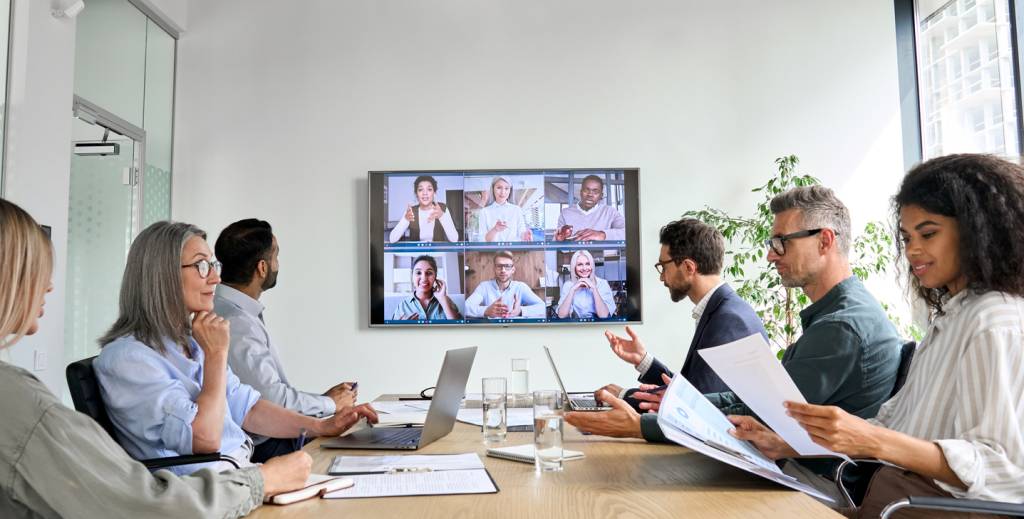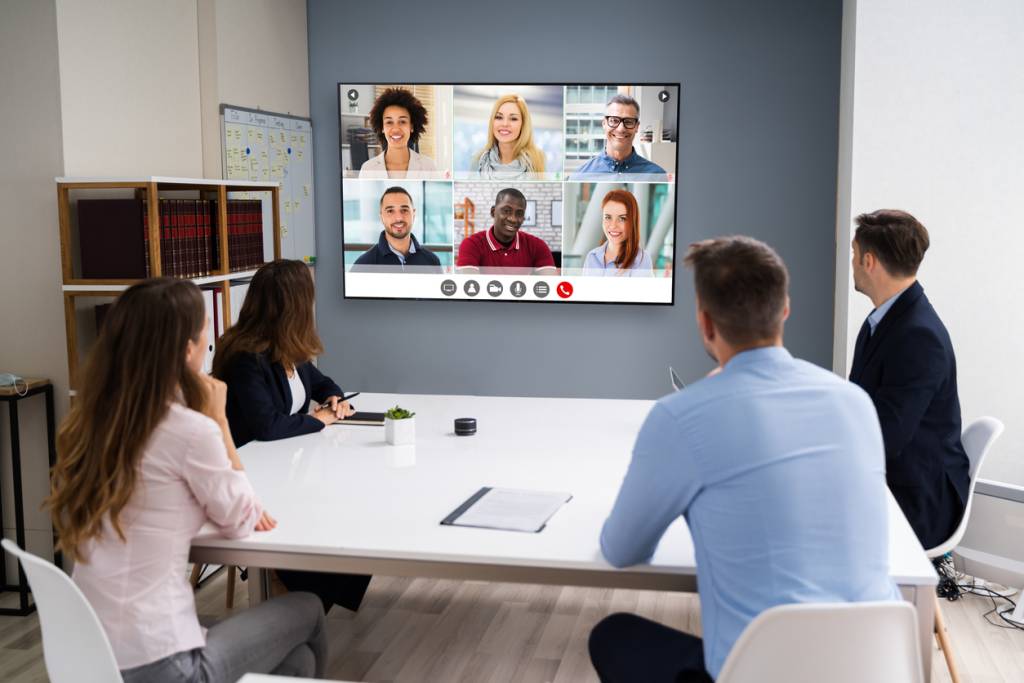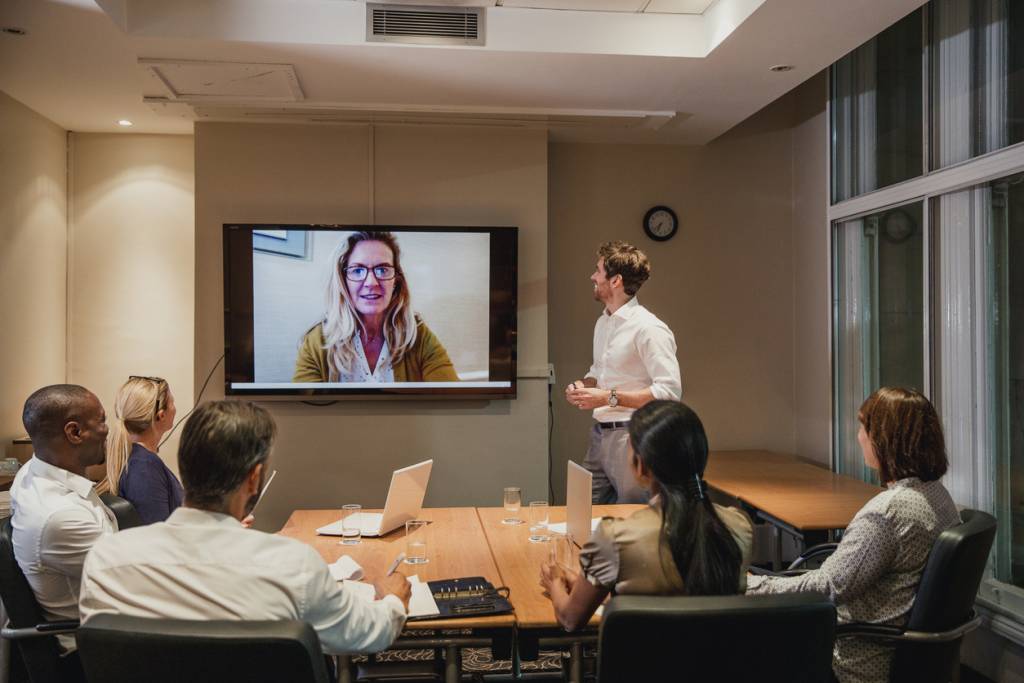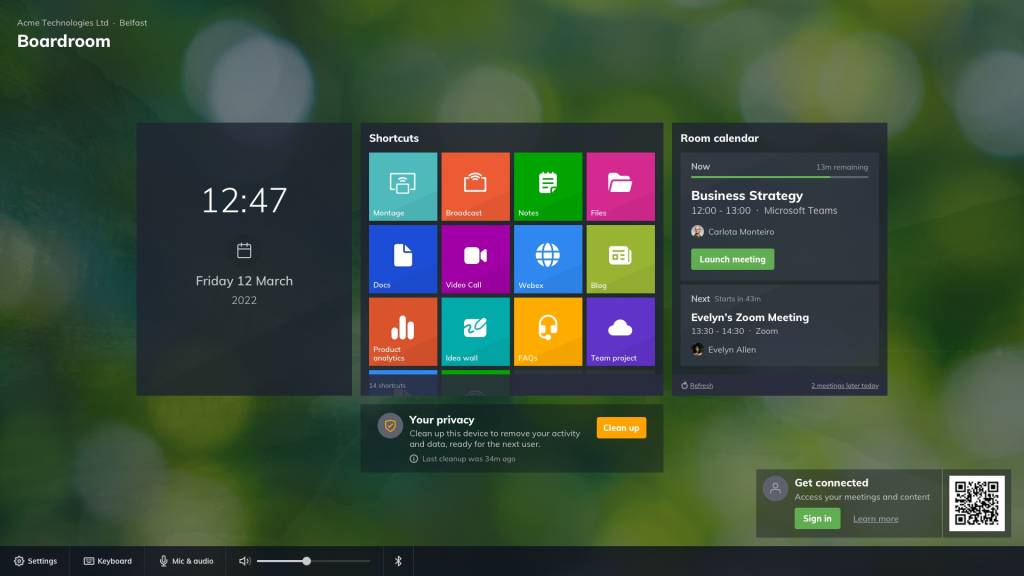
Meeting Room Technology: What is it?
What is the function of a meeting room?
At their core, meeting rooms exist to facilitate communication and collaboration between people. What started out as a room with a table and some chairs have transformed over the past few decades into what some would call the brains of the business. Wainhouse Research estimates there are already as many as 50 million huddle rooms globally, but the vast majority of huddle rooms have little or no technology in place.
Given that meetings take up, on average, 37% of an employee’s working hours, efficiency is not optional. It’s in this room that big decisions are made, ideas are generated, and relationships are formed.
A lot of meeting and huddle spaces in the office still rely on the traditional table and chair set-up, and this shouldn’t be a problem, except it is. The way employees work and the type of technology available has shifted dramatically over the past decade. Work is digital, and teams now need a way of sharing this. This has created a gap between expected and actual meeting room capabilities.
$37 billion – this is the average estimated cost of unproductive meetings a year. Tech-deficient rooms or incompatible legacy systems dictate how people work together rather than enable collaboration with the tools people actually use.
An evolving landscape

Remote working, work from home, distanced working; however you say it – the home-based office is here to stay. With many companies pledging to transition to more remote-based working even after the pandemic, a new challenge has emerged for workspaces to facilitate hybrid meetings. This means rooms equipped for video-conferencing with remote teams and clients – with interoperability for the various platforms out there.
Given the rapid pace of technology and digital transformation, it can be challenging to keep abreast of the solutions and software out there. With the rise of hybrid meetings and video conferencing in the post-pandemic landscape, how do you create a meeting room that is digitally enabled, accessible, and interoperable? (Without the need to continuously buy new tools every 6 months).
We’ve created a helpful guide to the essential meeting room tools, what they’re good for, and how to get the most out of your meeting room.
Your essential guide to meeting room technology
1. Visual displays
They say seeing is believing. This is very much the case when it comes to presenting. There is significant evidence that suggests most learning occurs visually – some researchers have estimated that 83% of human learning happens visually.
The psychologist Bruner conducted multiple studies and found that people remember 80% of what they see and do, 20% of what they read, and only 10% of what they hear.
When it comes to presenting new information or ideas, the meeting room display is a crucial tool. Large-format displays enable the sharing of content with larger groups and make information more accessible for those with visual impairments.
Interactive whiteboard displays also offer flexibility and communal input when it comes to real-time collaboration: presenters can create and edit documents, graphics, and spreadsheets, all of which can be dispersed after the meeting.
2. 4K Displays
The high pixel density of a 4K screen isn’t just for gamers; these displays offer capabilities for various applications in the meeting room. The high-quality detail means product developers can show off new designs in all their glory, or healthcare and engineering professionals can take their clients through detailed imaging and walkthroughs. These displays also increase visibility for all in the room under varying ambient lighting conditions, thanks to brightness and contrast levels.
3. Wide-angle and 360 HD cameras
With hybrid working now firmly on the agenda for many organizations, video conferencing is no longer just a consideration in the meeting space; it’s a necessity. Meeting rooms will need to be equipped to facilitate these virtual-in-person hybrid meetings, and a high-quality image and display is a component of this. Displays with built-in cameras will prepare businesses to transition seamlessly into this next phase of ‘post-covid collaboration.’
HD cameras resolve the ‘fish-eye’ problem of traditional video cameras and give remote participants a more natural viewing experience. Some can pivot to automatically detect who’s speaking in the room, to keep the presenter as the focus.
4. HD Audio
An EPOS survey revealed that workers spend, on average, five hours and nineteen minutes daily on activities related to sound and meetings – whether virtual or face-to-face. Worryingly, nearly every respondent said their concentration and efficiency had been negatively impacted as a result of these sound issues.
High-definition audio systems and speaker bars are displacing issue-riddled telephone speakers and microphones of the past. As hybrid meetings where some attendees join virtually become the new standard, , having a good quality speaker and microphone in the meeting room is essential for creating a clear and natural experience for those both in and outside of the room.

4. Screen sharing tools
It won’t come as much of a surprise that most of the world has gone wireless. Meeting attendees want to walk into a meeting room and be able to share their content to the screen without much friction.
Although this seems relatively straightforward, with damaged or missing HDMI leads common, meetings are too often held up by technical difficulties when it comes to screen sharing.
With our wireless screen sharing tool, Montage, anyone can present their content to the front of the room from any device. Plus, no network dependencies mean room users can connect their devices to the screen across any network. And as a software-only solution, there are no adaptors or cables needed.
5. Video conferencing tools

Although video conferencing tools were used prior to the pandemic, government restrictions on social gatherings transformed them from an occasional to essential tool almost overnight back in March 2020.
We may night be as reliant on them as we once were during the lockdown, but the global shift to hybrid working has firmly cemented them as a core operational function for most businesses. But with so many different UC tools out there – some organizations are running into problems when it comes to facilitating calls across the various platforms (Microsoft Teams, Zoom, Webex, Google Meet, BlueJeans, GoToMeeting, Lifesize, etc).
Employees have become accustomed to launching their video platforms of choice from their laptops. As they return to the office, they expect the same easy call launching on the meeting room screen. But with vendor-locked rooms and time-consuming sign-ins, they’re not enjoying the same smooth experience as they did at home.
As a result of the gap between expected and actual meeting room capabilities, some tech-savvy workers take things into their own hands, using consumer tools in corporate environments (often without the IT department’s blessing.) This workaround is a major headache from both a security and an efficiency perspective.
Make meeting spaces more secure and user-friendly with Launcher

Our call and app Launcher acts as an interface for the meeting room display, giving users simple access to their calls, calendars, and apps on the meeting room screen. Thanks to the ability to customize apps, your room users enjoy a consistent and standardized experience in every meeting space across your business. This improves user experience and confidence with using tech in the meeting space and reduces support requests.
Your room users can easily launch scheduled calls regardless of the platform. Microsoft Teams, Zoom, Webex, Google Meet, GoToMeeting, Lifesize, BlueJeans…Launcher works with the tools you work with, unlocking your meeting spaces from a single UC vendor.
Plus, with Launcher’s Kiosk Mode, IT Administrators are in control of what users can and can’t access on the meeting room system. You can easily customize the screen with the apps and tools you choose, so meeting room attendees can’t meddle with the settings or download any unapproved software.
Discover the benefits of Launcher in your meeting spaces
Want to stay in the loop?
Keep up-to-date with everything DisplayNote – including new releases, job openings, and customer giveaways.
Don’t worry, we’ll not spam you and we’ll never share your email with anyone








